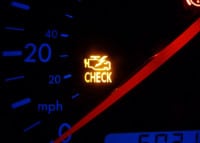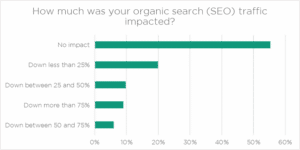 So, I plead GUILTY for driving around with my Check Engine Light on. When it first came on, it was alarming, but nothing went wrong and my truck seemed to run fine. So, I kept putting off an Auto Repair Shop visit until eventually, that little light on the dashboard became invisible. I don’t mean it went away, I just mean that it became normalized to where I didn’t even notice it anymore. Then the big surprise. I drive up to the Washington State Emissions testing station and guess what, oops… my O2 sensor was out. As you can imagine, my truck didn’t pass inspection and it was a total waste of my time. I had to go get it fixed and then return to wait in line again to have my car inspected.
So, I plead GUILTY for driving around with my Check Engine Light on. When it first came on, it was alarming, but nothing went wrong and my truck seemed to run fine. So, I kept putting off an Auto Repair Shop visit until eventually, that little light on the dashboard became invisible. I don’t mean it went away, I just mean that it became normalized to where I didn’t even notice it anymore. Then the big surprise. I drive up to the Washington State Emissions testing station and guess what, oops… my O2 sensor was out. As you can imagine, my truck didn’t pass inspection and it was a total waste of my time. I had to go get it fixed and then return to wait in line again to have my car inspected.
The same thing can happen with almost situation. If you keep putting things off, chances are, it’s going to be worse if you don’t fix the issue right away.
Does Your Website Have a Check Engine Light?
While it’s true, websites don’t have visual indicators that grab your attention to let you know something is wrong. However, there are some common sense things you can do to prevent issues in the future. Regardless of what platform you’re using to run your website, here are some common tips to help keep your website running:
Domain Health – Check to make sure your domain is not going to expire. Make sure you have “Auto-Renew” and “Privacy” turned on. It’s so important to have your auto-renew feature turned on if you’re planning to keep your website running. I have countless stories of folks not paying attention, just to have their domain expire and purchased by someone else. YIKES! Not going to end well.
Hosting Plan Health – Typically, hosting plans have limited disk space, memory, and bandwidth. If you run out, your website may not function. Even worse, if you have email through your hosting account, you may not get important email. It’s always good to make sure you have notifications set with your hosting account so you don’t miss any warning messages.
Website Backups – Sounds pretty simple, but you might be surprised at how may people don’t even know if they have a backup. It’s best to have a regular backup of the entire website, and even better if the backup is to an offsite location. An example of how plumThumb does backups, is to setup our offsite location at Amazon Web Services (AWS) S3 service. It’s highly secure and very reliable.
Email Notifications – I don’t know what the percentage is, but I do know a large percentage of websites have contact forms to generate leads for new business. If you’re NOT GETTING the notifications, you’re missing potential sales. That’s why it’s important to periodically check to make sure your website is sending notifications.
Website Security – If you’re running WordPress, you can use some very good plugins (Wordfence or Sucuri) to setup some very good security to prevent a number of problems from hackers and malicious programs. Another great way to get some basic security is to set your website up to run through a Content Delivery Network (CDN). CDN’s, like Clouldflare, offer free or paid services to give you added security and performance.
SEO Basics – Are your Title and Meta Description tags complete and optimized on every page? These fields are vitally important to have completely filled out with well written to sync with content on your page or post.
Website Maintenance Plans are GOOD!
The above topics are simply basic items to make sure you’re website is less likely to run into problems. Creating a checklist and making an effort to do regular website maintenance is the best way to ensure you never see a check engine light on your website. If you have any questions or need help, plumThumb offers affordable and thorough website maintenance plans. Find out how we can help your company. Contact us today!


